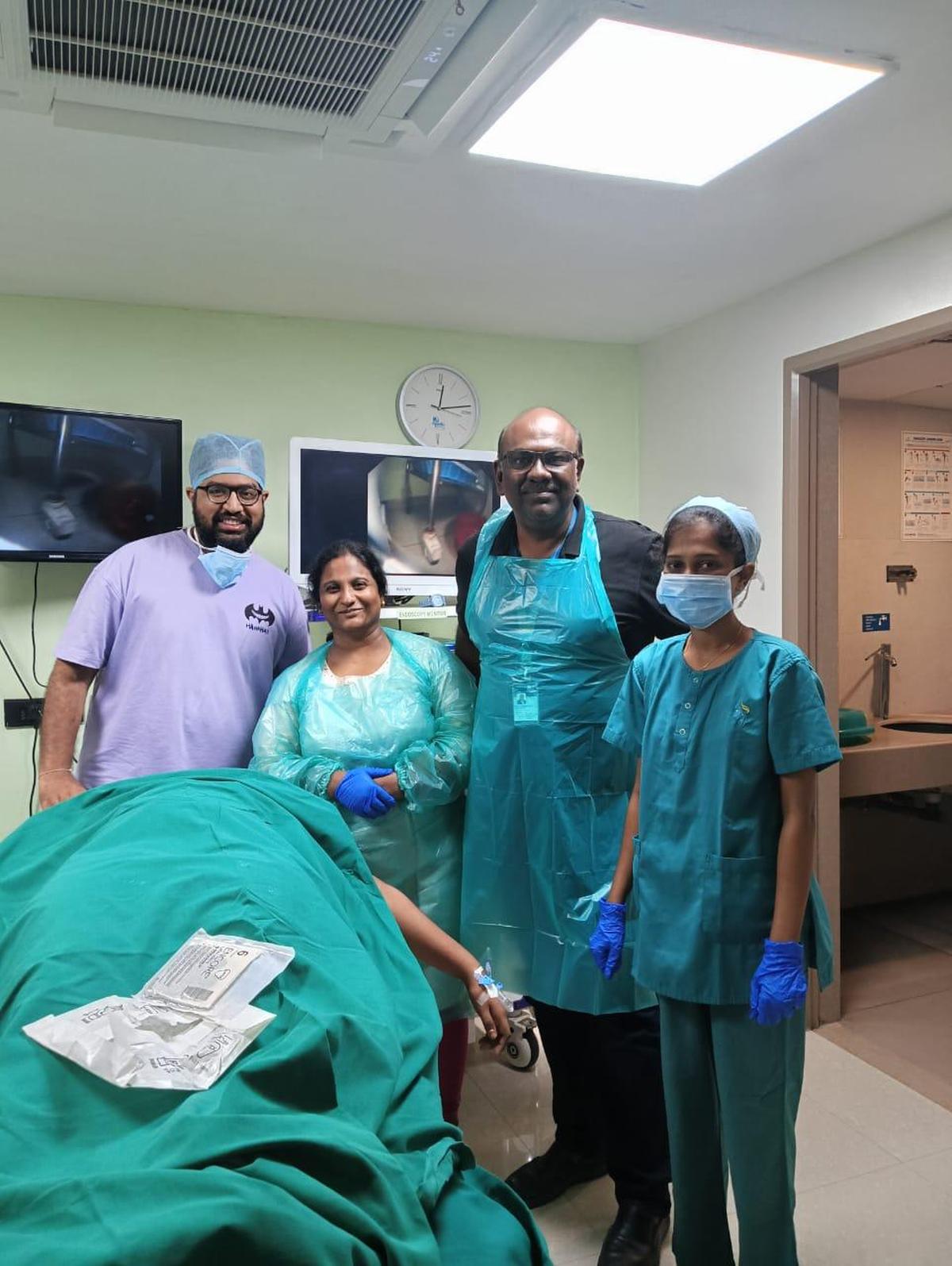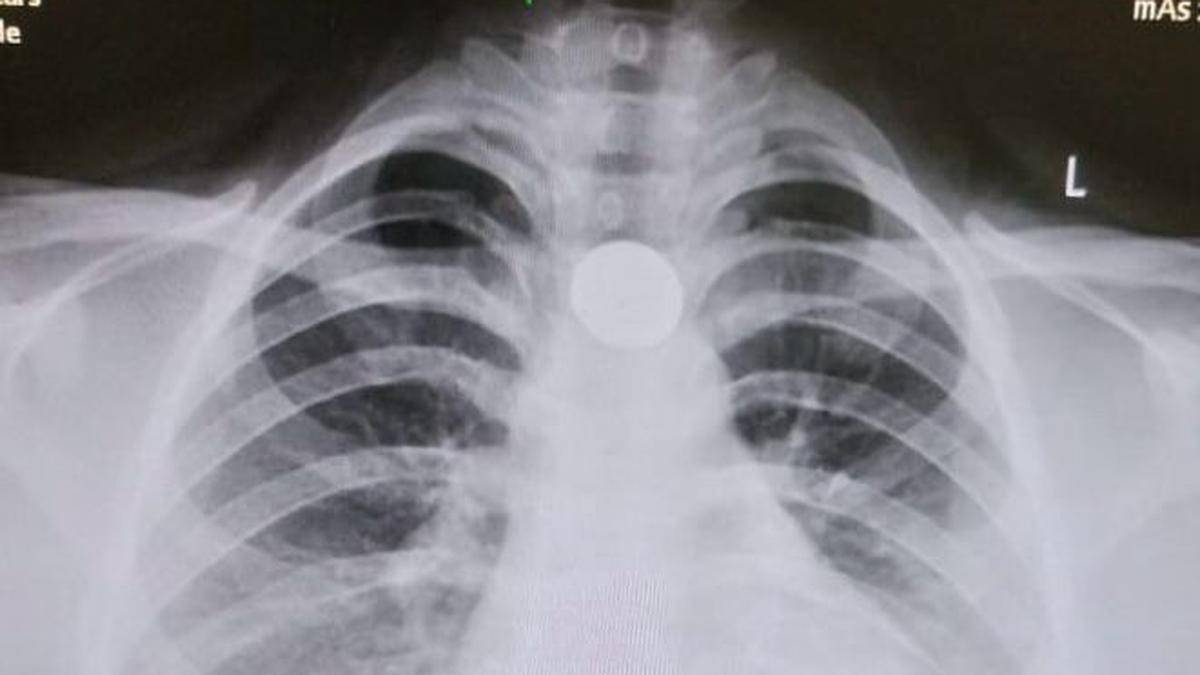In India, poisoning rates are among the highest in the world. Childhood poisoning range from 0.33–7.6%, most commonly observed among children in the age group of 1–5 years.
According to the World Health Organization (WHO), unintentional poisoning is a significant global public health problem. WHO estimates that unintentional poisoning accounts for a significant portion of emergency hospital visits in many countries.
Solid and liquid ingestions
Dhanasekhar Kesavelu, consultant paediatrician and paediatric gastroenterologist, Apollo Children’s Hospitals, Chennai, classifies ingestions into solids and liquids. Solid objects include Lego pieces, pins, coins, plastic parts, locks, and keys– typically swallowed out of curiosity. If such items reach the stomach and are smooth, they may pass naturally. But if they get stuck in the oesophagus, the child may experience dysphagia or difficulty swallowing, sometimes clutching their chest.
“Some items need urgent removal, especially button batteries, which can burn through tissue rapidly due to electric discharge. Coins stuck in the oesophagus also require removal if they cause symptoms,” says Dr. Kesavelu , citing the 2023 ESPGHAN guidelines (European Society for Paediatric Gastroenterology Hepatology and Nutrition), which outline detailed protocols for ingestion emergencies.
Dr. Kesavelu points out that liquid ingestions are often more dangerous than solids, especially when they involve corrosive substances like acids, alkalis, or battery fluids. “These liquids can cause severe internal burns in the food pipe or, in some cases, even the respiratory tract if aspirated,” he explains. One crucial rule, he stresses, is never to induce vomiting if a child has ingested something corrosive. “Vomiting brings the chemical back up through the oesophagus, essentially doubling the damage.”

The summer spike and curious age
Summer holidays bring with them a notable rise in paediatric emergencies, particularly accidental ingestion cases.
Swati Bhayana, consultant, paediatric hematology and oncology, Fortis Healthcare, Gurgaon, observes that such incidents increase significantly during these months. With children, especially toddlers and those under seven, spending more time at home, their natural curiosity leads them to explore their surroundings freely. “They are still learning what’s safe and unsafe,” she explains, adding that the combination of boredom, heat-induced dehydration, and a lack of close supervision often results in children picking up small objects or sipping from containers without understanding the risks.
Dr. Bhayana emphasises that most of these cases aren’t due to any underlying illness but rather stem from situational factors. She often sees children ingest substances like mosquito repellents or toilet cleaners that have been left within easy reach. “Children don’t know the difference between a bottle of water and a bottle filled with Harpic or All Out when they’re stored in familiar-looking containers,” she says. With both parents working and supervision often left to older grandparents, the chances of such accidents increase.
Janani Sankar, medical director, paediatrician, Kanchi Kamakoti Childs Trust Hospital, Chennai, notes that among the most dangerous of accidents that befall kids in the summer vacation are accidental ingestions. Parents often store cleaning agents, kerosene, acids, and other household chemicals in reused PET or water bottles. To a child, these containers appear safe and familiar, making the mistake of drinking from them frighteningly common.
Potential health risks from household substances
The effects of ingesting household substances can be devastating. Dr. Sankar explains that such ingestions can lead to inhalational damage to the lungs, central nervous system toxicity, and severe local injuries to the mouth and oesophagus. These are not minor mishaps — they require immediate emergency care, and in some cases, intensive intervention.
Dr. Sankar also highlights the risks posed by modern toys and materials. Slime, silicone gel toys, and button batteries may appear harmless but can cause serious internal damage. One child had to be treated for an intestinal obstruction after ingesting slime.
Not all ingestions are dangerous. She also notes that substances like crayons, makeup products, and creams are generally non-toxic in small quantities. However, strong chemical agents like mosquito liquids, coils, and certain cleaners remain a major cause for concern.
Emergency decisions and the need for public awareness
Dr. Kesavelu, adds that the size of a child’s airway is incredibly small — often no wider than a little finger. “If anything enters the respiratory tract instead of the food pipe, it becomes a life-threatening emergency,” he says. A single pea or plastic piece can block the airway completely.
He stresses that awareness among parents and caregivers is vital. Many don’t realise the risks of leaving button batteries, sharp toys, or open cleaning products within a child’s reach. “Children don’t need a reason to swallow something — they just act. Prevention is always better than cure.”
He reiterates the importance of timely imaging, like an X-ray, to confirm the location of the ingested item. “Whether to observe or operate depends entirely on what the child has swallowed, how long ago, and where it is now,” he says. Following the right steps early can make a critical difference.
He shares a recent case to illustrate the importance of quick and coordinated medical response. “I’d like to highlight a recent case where Anita Tarigopula, an ER Consultant at Apollo Hospitals, Chennai, successfully removed a foreign body lodged in a child’s esophagus. The child arrived at our ER at 11:15 PM, and within an hour, Anita, along with Karthic, our anesthetist, and our dedicated support technicians, worked swiftly and efficiently to ensure the object was safely removed.

A medical team at Apollo Hospitals, Chennai, led by ER Consultant Anita Tarigopula, successfully removed a foreign body from a child’s oesophagus.
| Photo Credit:
Image : Special Arrangement
Need for prevention, early intervention and dedicated guidelines
Dr. Bhayana emphasises the danger of some ingestions that doesn’t always show immediate symptoms. “Children may not cough or vomit instantly after sipping something toxic. The reaction can be delayed,” she says. A common but lesser-known risk is pneumonitis caused by inhaling fumes from products like All Out, even without ingestion.
Dr. Sankar emphasis the need for structured engagement for children. Camps can be a good option if they’re affordable. For families where both parents are working and children are under the care of elderly relatives, extra caution is necessary. Dangerous items — including cleaning products, medications, batteries, and sharp tools — should always be kept well out of reach.
Dr. Bhayana notes that India needs a clearly documented national paediatric guidelines for treating such accidental ingestions, though paediatricians rely on international literature and personal experience. “What we have are recommendations — broad clinical approaches based on the substance, the age of the child, and symptoms. But we need formal, structured protocols with clear dos and don’ts, especially for corrosive liquids and household chemicals,” she says.
She also adds that that while guidelines and antodotes exist for treating some poisonings — experience and multidisciplinary coordination are often what save lives in these scenarios. But more than anything, she stresses, prevention is the key. Keeping children safe begins with creating an environment where their natural curiosity doesn’t lead to harm.
Accidental ingestions prevention: tips for parents & caregivers
Store medicines, cleaning agents, and chemicals in locked cabinets or out-of-reach shelves.
Install child-proof latches in kitchen and bathroom cupboards.
Never call medicine “candy.” Kids may look for it thinking it’s a treat.
Avoid storing medicines or chemicals in food or drink containers.
Keep a close eye on kids during household chores, travel, or social gatherings.
Educate older siblings about not leaving small items (coins, batteries, beads) around.
Opt for child-resistant packaging for medicines and chemicals.
Properly dispose of unused or expired medicines.
Keep gadgets with button batteries out of reach or tightly secured.
Be cautious with toys, remotes, and watches.
In case of an emergency :
Try best to stay calm and seek immediate medical help.
Bring the item (or packaging) that was ingested to the hospital if possible.
Do not induce vomiting or give home remedies without medical advice.
Published – April 21, 2025 05:50 pm IST
